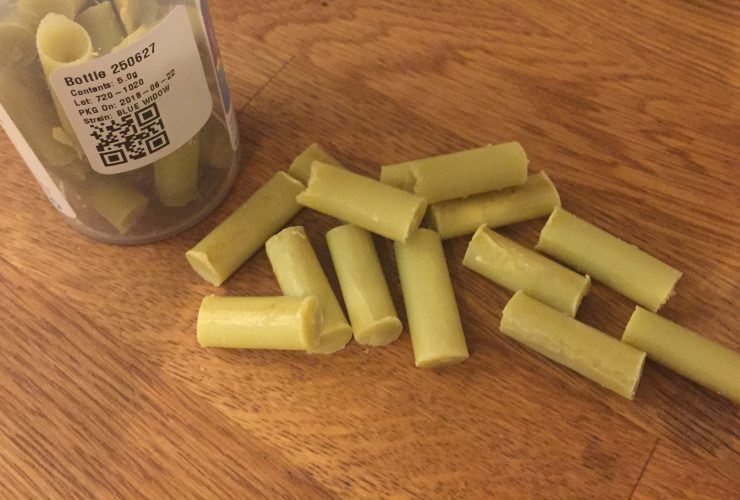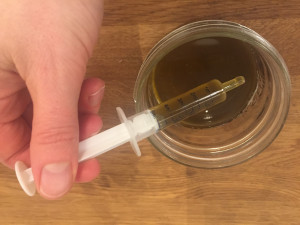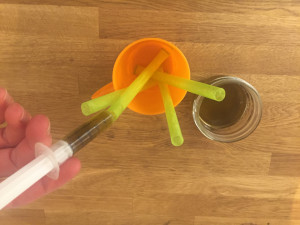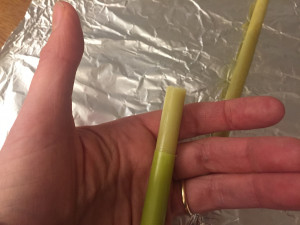How (and why) to make cannabis suppositories

Written by
What are suppositories?
Suppositories are a medicine delivery system that are inserted into the vagina or rectum. They are most commonly used to treat symptoms in the pelvic area like vaginal thrush or haemorrhoids, but can also be used for other conditions when the stomach doesn’t absorb oral medications properly or the patient finds it difficult to swallow pills. Suppositories absorb directly into the bloodstream bypassing the liver, which means the cannabinoids won’t go to the brain so they are a great way to utilise the painkilling benefits of THC without experiencing its psychoactive properties.
Why use suppositories?
Using cannabis for medical reasons often involves some trial and error on the users part. Everyone seems to respond differently to different doses, strains and terpenes. On this journey to find what works best for us we may have discovered we don’t absorb oils well, or they give us IBS symptoms or reflux. Maybe we don’t want to use alcohol-based tinctures, and smoking is out of the question, we may have even tried all these methods for different reasons, and be quite happy with them, some work better than others for different conditions, but in some cases, we can’t quite get the pain-relieving effect we need. This seems especially true for pain like sciatica, or endometriosis and this is where suppositories can make a big difference. They are fantastic for treating body pain below the belly button, and they can even help with generalized aches and pains and those flu like feelings typical of chronic illness.
Cons of using suppositories
They are a bit impractical for use at work for example, but once you perfect your insertion technique, you’re on your way to a pain-free day!
Quite a bit of the oil is lost into the decarbed herb, so you really need to squeeze that last bit of oil out hard! CBD suppositories are about 50% weaker than THC ones, so I would recommend using twice the dry herb for a CBD suppository (eg 5 grams of herb with 50ml of oil whereas THC ones you could use 5 grams of herb with 100ml of oil to get twice the amount of suppositories).
How to use suppositories
If you have made your suppositories with a suppository mould, insertion will be very easy. Just place the pointed end at the entrance of the rectum and give a gentle push, no need to push further than just inside the rectum. The sphincter does a great job of pulling the suppository inside and holding it in place. If you are using suppositories made using the bubble tea straw method in this recipe, it’ll be a little more tricky inserting them because the end isn’t pointed, but as the cocoa butter melts on contact with skin it is still not too difficult and a little practice will make perfect.
You can also use the suppositories vaginally, but due to the effectiveness of them, even pelvic pain related to the uterus could be relieved with anal insertion. Don’t be afraid to experiment!
Warning: if you push the suppository too high into the anal canal, you could get a psychoactive effect. This is easily avoidable by allowing the sphincter to pull the suppository in, rather than pushing the finger up into the anal cavity.
What kind of oil should you use?
You can use coconut oil or cocoa butter BUT coconut oil will need to be kept in a freezer so you wouldn’t be able to take them out of the house. Coconut oil also melts very fast in your hands so it can be messy and hard to insert. Cocoa butter is high recommended, as it doesn’t melt at room temp so can be stored out of the fridge/freezer.
What strain of cannabis should you use?
Terpenes don’t seem to come into play as much when using suppositories because they bypass the liver, so high THC or high CBD content is the main thing to look out for when purchasing a strain. As suggested above, THC is recommended over CBD as it seems to be more powerful, in this situation. You’ll need twice the CBD to get the same effect and as neither will have a psychoactive effect I’d recommend a high THC shake to be the most efficient and economical way of making suppositories. Canna Farms and Medreleaf have very good value shake (limited availability), while Hydropothecary and Emblem have a great pre-decarbed flower in high THC or CBD, it’s a little more expensive than other products but it cuts out the need to decarb, so if you don’t want to stink your house up in the decarbing process, this would be a great option.
What else do you need?
- Cocoa butter (or coconut oil)
- Bubble tea straws (or suppository mould)
- Container to hold straws upright
- Mason jar (x2)
- Cheesecloth
- Slow cooker
- Double boiler (or pyrex dish in a slightly larger pan)
- Funnel
- 5ml syringe



How to make the suppositories
- Decarb your herb (or use AVB or a pre-decarbed product) Find out how to decarb here
- Weigh and note the weight of your decarbed herb
- In a double boiler melt the cocoa butter
- Measure out 10ml (up to 20ml with THC) of oil per gram of decarb into the mason jar
- Add decarb to the jar
- Place jar in a water bath inside the slow cooker
- Cook on low for 4 – 6 hours
- Strain herb with cheesecloth and funnel
- Using syringe pour oil into the straws
- Leave to cool overnight (Don’t freeze it! It will make the cocoa butter shatter)
- Once fully cool and dry, run warm water over the straw to unstick and push the stick of butter out.
- Cut the stick into 1 inch long pieces (50ml of oil will make about 10-12 pieces)
- Test them out!
Dosage
Because the cannabinoids go directly into the bloodstream without heading to the liver you can take large amounts of THC without psychoactive effects for great pain relief. However, it doesn’t actually take much THC for a strong pain-relieving effect that will last 2-3 hours. A 1:2 ratio of herb to oil will work well with a high THC strain (1 gram of flower with 20ml of oil.) CBD, on the other hand, or a lower percentage THC strain, works best with a 1:1 ratio of oil to herb. For the strongest suppositories use a 1:1 ratio regardless of the strain.


